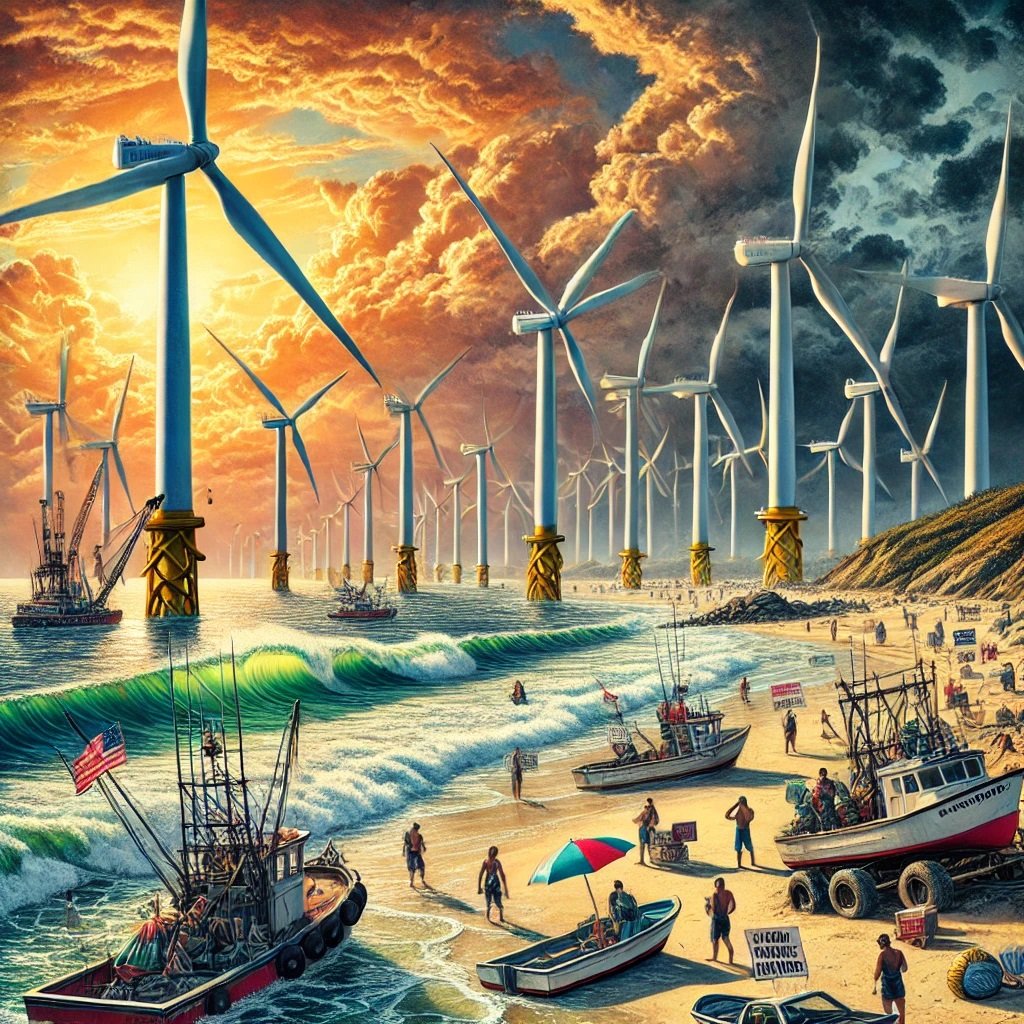
For years, the debate over offshore wind turbines along the New Jersey Shore has been a lightning rod for controversy. At the heart of the conflict is a clash between renewable energy advocates and those who live and work along the coast, particularly Republicans and local groups who claim the projects bring unintended environmental consequences.
Their primary concern? The increasing number of whales and other marine wildlife washing ashore, which some attribute to the surveying and construction activities associated with offshore wind farms. While organizations like the National Oceanic and Atmospheric Administration (NOAA) and the Marine Mammal Commission strongly dispute these claims, the issue has sparked a fierce political and environmental debate that continues to ripple across the region.
The Case Against Offshore Wind Projects
Opponents of offshore wind turbines argue that the projects are not as clean or harmless as they appear. Many residents along the Shore fear that the process of surveying and constructing turbines disrupts marine ecosystems, particularly by creating noise pollution that can disorient marine mammals such as whales and dolphins.
In recent years, the number of dead whales washing up along the New Jersey coast has alarmed locals. Some groups have blamed the use of underwater sonar during the turbine construction process, alleging that it interferes with marine mammals’ navigation systems, potentially causing fatal strandings. This narrative has been widely circulated by grassroots organizations and certain political figures in the state, who claim that offshore wind projects are rushed, poorly regulated, and harmful to the environment. For many, these concerns extend beyond wildlife to include potential impacts on tourism, commercial fishing, and the aesthetic beauty of the Shore.
What Science Says
Despite these fears, leading environmental and marine science organizations have pushed back on the idea that offshore wind projects are responsible for marine wildlife deaths. NOAA, for example, has stated that there is no evidence linking wind turbine activities to the increased number of whale strandings. The Marine Mammal Commission has echoed this sentiment, attributing many of the deaths to factors such as vessel strikes and entanglement in fishing gear. Scientists also note that whale strandings are not a new phenomenon, and the recent increase along the Atlantic Coast may be due to broader environmental changes, such as warming ocean temperatures that have altered prey migration patterns. These changes have brought certain whale species closer to shipping lanes, increasing their risk of collisions with vessels.
Renewable Energy vs. Environmental Concerns
Proponents of offshore wind argue that the long-term benefits far outweigh the perceived risks. Wind energy is a key component of New Jersey’s plan to reduce greenhouse gas emissions and transition to renewable energy sources. Advocates contend that moving away from fossil fuels is critical to combating climate change, which itself poses significant threats to marine ecosystems and coastal communities. Governor Phil Murphy has been a vocal supporter of offshore wind, citing its potential to generate clean energy, create jobs, and position New Jersey as a leader in renewable energy. The state has set ambitious goals to produce 11 gigawatts of offshore wind energy by 2040, enough to power millions of homes.
However, for critics along the Shore, the question remains: Are the environmental trade-offs worth it?
Community Tensions Rise
The debate over offshore wind has exposed deep divides within New Jersey’s coastal communities. On one side are environmentalists, state officials, and renewable energy advocates who view wind power as essential for the future. On the other are local residents, fishermen, and some Republican lawmakers who see the projects as a threat to their livelihoods and the natural beauty of the Shore. Public hearings and town halls on offshore wind have become heated, with opponents demanding greater transparency and stricter oversight of the projects. Many argue that state and federal agencies have failed to adequately address their concerns, fueling distrust and skepticism about the true impact of wind farms.
The Path Forward
As the debate continues, finding common ground will be essential. Scientists are calling for more comprehensive research to understand the potential effects of offshore wind projects on marine life. Meanwhile, renewable energy advocates emphasize the need for community engagement to address local concerns and build trust. For now, the future of offshore wind in New Jersey hangs in the balance. The projects are moving forward, but the backlash from coastal communities signals that the road ahead will be anything but smooth.
The question remains: Can New Jersey strike a balance between its renewable energy goals and the concerns of its coastal residents?
At CANWETALKBOUTIT Media, we believe this conversation is far from over.
